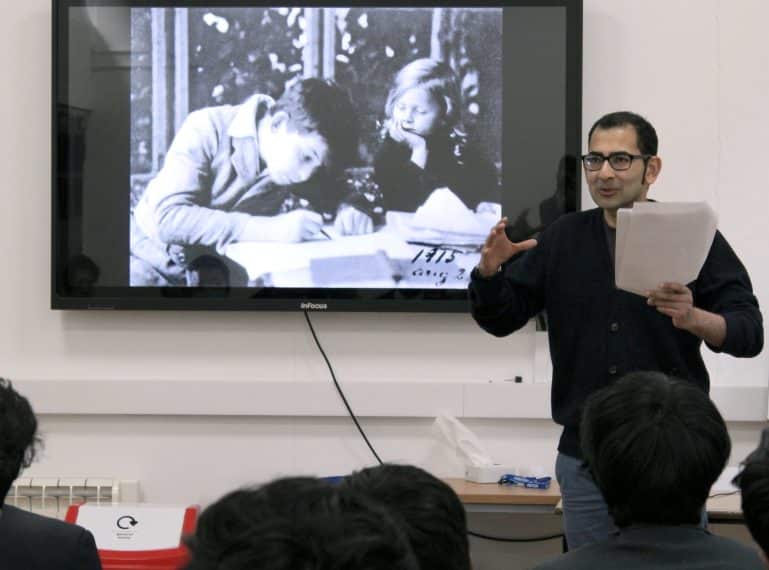
Author, scientist and QE parent Dr Ananyo Bhattacharya gave a talk to senior pupils on his book about John von Neumann, the brilliant Hungarian-American polymath who made breakthroughs in fields ranging from nuclear energy to economics.
 Dr Bhattacharya’s book, entitled The Man from the Future: The Visionary Life of John von Neumann, was named a Financial Times and Times Literary Supplement Book of the Year in 2021.
Dr Bhattacharya’s book, entitled The Man from the Future: The Visionary Life of John von Neumann, was named a Financial Times and Times Literary Supplement Book of the Year in 2021.
His lunchtime talk to A-level Mathematics, Physics and Economics students explored how von Neumann’s advances in mathematics 70–80 years ago continue to inform the science of today.
Headmaster Neil Enright said: “We are grateful to Dr Bhattacharya, as a QE parent, for coming in to School to share his expertise and to inspire our senior boys. It is great that we can draw upon different constituencies within the Elizabethan community, including parents and alumni, to enhance the educational experience offered here.”
Dr Bhattacharya, whose son, Callistus, is in Year 7, is a science writer who has worked for The Economist and Nature, the weekly multi-disciplinary scientific journal. Prior to that, he worked as a medical researcher at the Burnham Institute in San Diego. He has a degree in Physics from Oxford and a PhD, also in Physics, from Imperial College London.
The subject of his book, von Neumann, was born in 1903 to a wealthy Jewish family in Budapest. A child prodigy, he had published two major mathematical papers by the age of 19.
After an early career in German academia during the late 1920s, he took up an invitation to Princeton University in October 1929, becoming a naturalised citizen of the USA in 1937.
In a life of only 53 years – he died of cancer in February 1957 – he made major contributions in subjects including mathematics, physics, economics, computing and statistics.
During World War II, he worked on the Manhattan Project – the research and development that produced the first nuclear weapons – and after the war, he served on the General Advisory Committee of the United States Atomic Energy Commission.
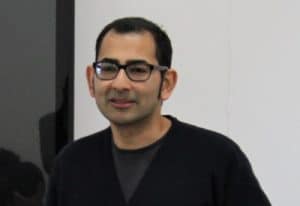 In his talk, Dr Bhattacharya mentioned the Manhattan Project as well as, inter alia, von Neumann’s contributions to set theory, game theory and the development of the first programmable digital computer.
In his talk, Dr Bhattacharya mentioned the Manhattan Project as well as, inter alia, von Neumann’s contributions to set theory, game theory and the development of the first programmable digital computer.
Head of Library Services Jenni Blackford said: “Dr Bhattacharya delivered a friendly, accessible and vastly informative talk about the life and accomplishments of von Neumann.”

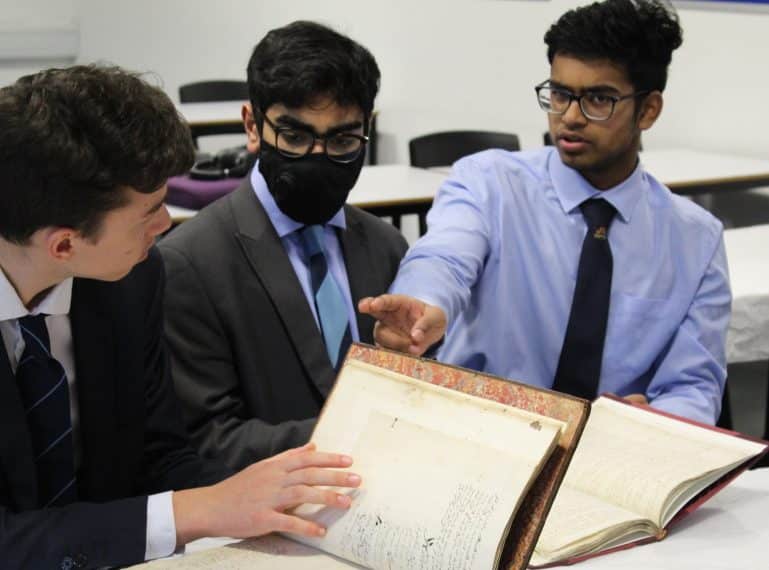
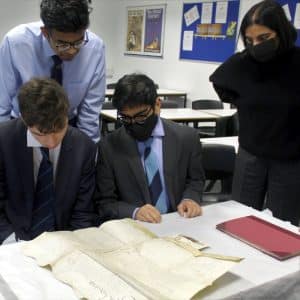 English teacher Kanak Shah has brought together a group of dedicated Year 12 boys and trained them in palaeography – the study of ancient and pre-modern manuscripts.
English teacher Kanak Shah has brought together a group of dedicated Year 12 boys and trained them in palaeography – the study of ancient and pre-modern manuscripts.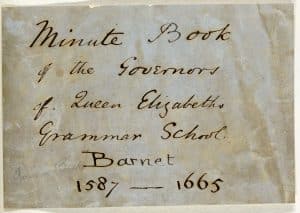 “The earliest documents present an interesting challenge as they were written before the standardisation of handwriting, and so require careful decoding,” said Ms Shah.
“The earliest documents present an interesting challenge as they were written before the standardisation of handwriting, and so require careful decoding,” said Ms Shah.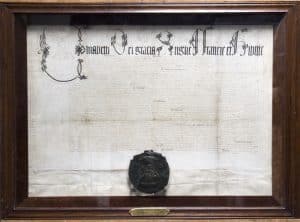 It is not clear who made the the Barnet Museum transcription, which was completed some time prior to 1931. The preface to the museum’s collection of QE translations and transcriptions was written in May 1931 by Cecil L Tripp, author of A History of Queen Elizabeth’s Grammar School, published 1935.
It is not clear who made the the Barnet Museum transcription, which was completed some time prior to 1931. The preface to the museum’s collection of QE translations and transcriptions was written in May 1931 by Cecil L Tripp, author of A History of Queen Elizabeth’s Grammar School, published 1935.
 Still basking in their success, current School Captain Theo and classmate Olly were then joined by fellow Year 12 pupils Alan Yee Kin Kan and Antony Yassa for the French debating competition, which was held at St Paul’s Girls’ School.
Still basking in their success, current School Captain Theo and classmate Olly were then joined by fellow Year 12 pupils Alan Yee Kin Kan and Antony Yassa for the French debating competition, which was held at St Paul’s Girls’ School.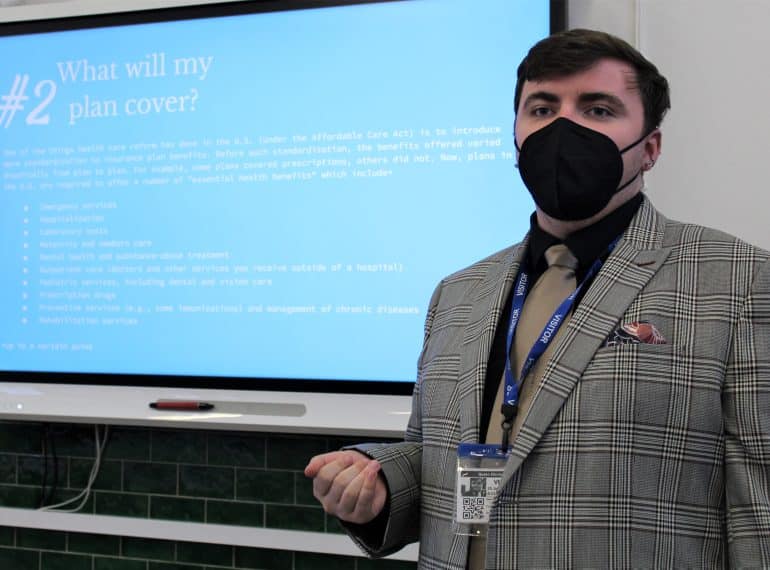
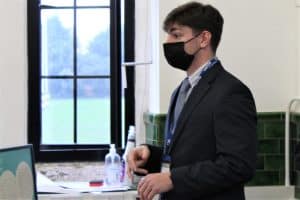 Headmaster Neil Enright said: “I am grateful to our three current interns, Evan Burns, Nathaniel Austin-Mathley, and Ben Duncan, for their contribution to this meeting and to our enrichment programme more generally. Our relationship with the University of Connecticut extends back over a number of years and it is great that we can again welcome interns this year. It is a connection which gives us fascinating insights into the differences in pedagogy and educational culture between our respective countries.
Headmaster Neil Enright said: “I am grateful to our three current interns, Evan Burns, Nathaniel Austin-Mathley, and Ben Duncan, for their contribution to this meeting and to our enrichment programme more generally. Our relationship with the University of Connecticut extends back over a number of years and it is great that we can again welcome interns this year. It is a connection which gives us fascinating insights into the differences in pedagogy and educational culture between our respective countries. “It was eye-opening to understand the complex and diverse methods of insurance and financing these large hospital bills,” said Ugan. The boys attending learned that insurance companies dominate US healthcare industries, presenting American citizens with a welter of quotation pathways and options – encompassing premiums, walk-in fees and ‘deductibles’ – that can be very difficult to understand. The contrast with the relative simplicity achieved by the NHS system in the UK was highlighted.
“It was eye-opening to understand the complex and diverse methods of insurance and financing these large hospital bills,” said Ugan. The boys attending learned that insurance companies dominate US healthcare industries, presenting American citizens with a welter of quotation pathways and options – encompassing premiums, walk-in fees and ‘deductibles’ – that can be very difficult to understand. The contrast with the relative simplicity achieved by the NHS system in the UK was highlighted.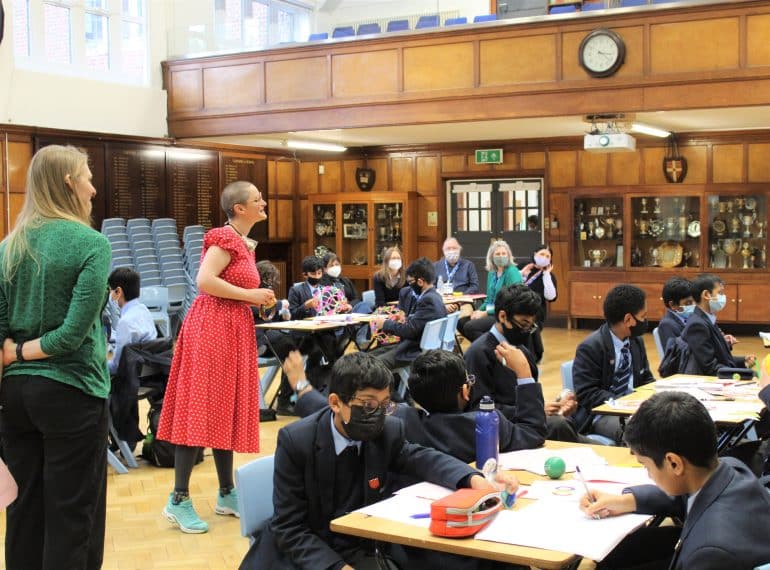
 Assistant Head (Pupil Progress) Sarah Westcott said: “This workshop was an important insight for our students into the lived experience of two members of the neurodiverse community.
Assistant Head (Pupil Progress) Sarah Westcott said: “This workshop was an important insight for our students into the lived experience of two members of the neurodiverse community. Dr Foster and Dr Farahar run
Dr Foster and Dr Farahar run 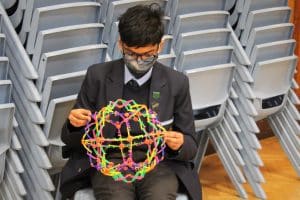 ‘Stimming’ – self-stimulatory behaviour involving repeated actions or activities that either excite or calm the sensory nervous system,
‘Stimming’ – self-stimulatory behaviour involving repeated actions or activities that either excite or calm the sensory nervous system,
 Arhan Panjwani, of Leicester House, took first prize with a talk that urged the grand final audience in the Main School Hall to consider the effect we are having on the world around us and to take action. It was illustrated by his aerial photo of the area near his home, taken by a drone.
Arhan Panjwani, of Leicester House, took first prize with a talk that urged the grand final audience in the Main School Hall to consider the effect we are having on the world around us and to take action. It was illustrated by his aerial photo of the area near his home, taken by a drone. Boys were allowed to speak for up to three minutes about their photograph, but had to talk without notes. Merits were awarded for all six finalists, with 20 House points given for first place, 14 for second and 10 for third.
Boys were allowed to speak for up to three minutes about their photograph, but had to talk without notes. Merits were awarded for all six finalists, with 20 House points given for first place, 14 for second and 10 for third.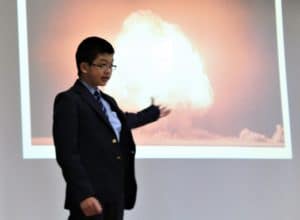 “Notwithstanding such use of ‘human interest’ and the effective deployment of humour by some, many of the boys used their photo to make an important point and deliver a message with wide meaning, giving us plenty to think about.”
“Notwithstanding such use of ‘human interest’ and the effective deployment of humour by some, many of the boys used their photo to make an important point and deliver a message with wide meaning, giving us plenty to think about.”